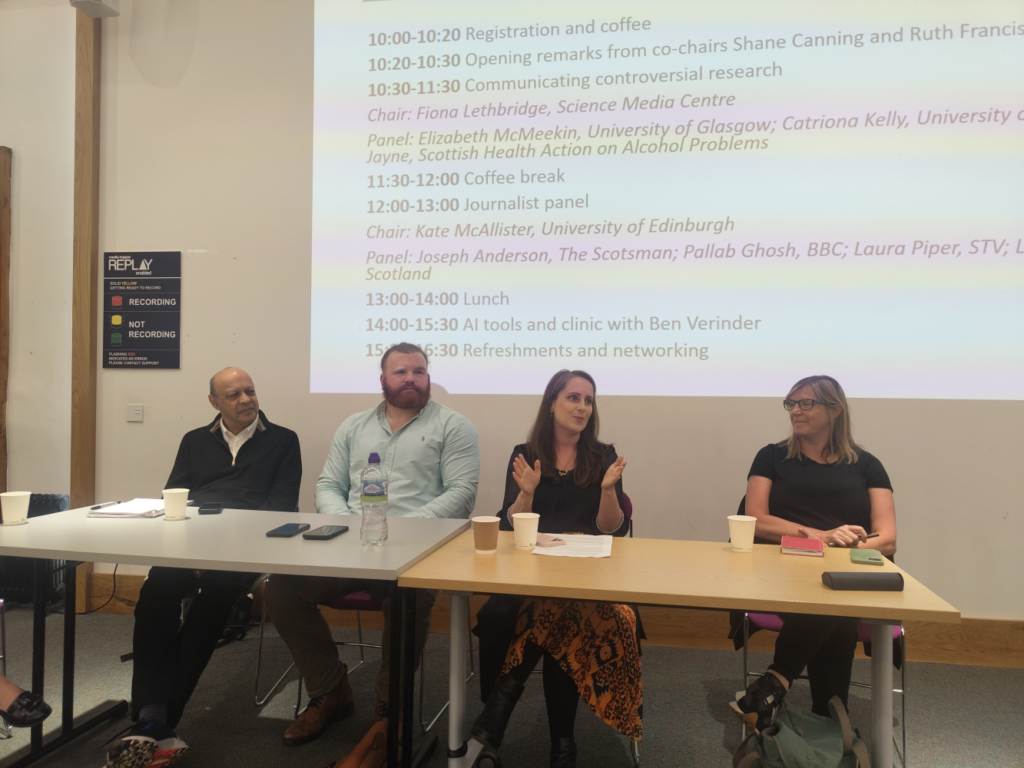In late July, we hosted our first Stempra Scotland event since 2018, and what a fun, educational and engaging day it was! We had over 50 attendees, who travelled from Glasgow, the Highlands, Aberdeen, Carlisle, Northumberland and Leeds, as well as our local colleagues in Edinburgh, and who work for funders, higher education institutes, thinktanks and government bodies.
The morning started with a panel discussion about communicating controversial research. Fiona Lethbridge of the Science Media Centre chaired and presented her experiences, and Elizabeth McMeekin of the University of Glasgow, Catriona Kelly from University of Edinburgh and Elinor Jayne from Scottish Health Action on Alcohol Problems shared their knowledge.
Their top tips are:
● Work collegially with all partners involved in the research to ensure you are all providing the same messages and able to support each other if challenges arise
● Brief the researcher, and run over responses with them ahead of time so that you feel confident that they will explain the research clearly, and that they can address any relevant caveats
● Prepare them for any difficult questions and rehearse with them if they need the practice – some will be experienced but others may need this. Some will even want hand holding through interviews and this is also your job!
● Research can be politicised, and we should approach communications with this in mind, thinking through potential angles
● Though media was the focus of this session, this is just one channel in your strategy and there will be different ways to reach different audiences. Make sure you have these covered
Next up was the journalist panel, which included: Pallab Ghosh, BBC; Laura Piper, STV; Lisa Summers, BBC; and, Joseph Anderson, The Scotsman. They all said that they value the media officer community and appreciate the work that we do. For the most part, they do not like to follow a mas-mailed press release but prefer to develop a story that’s tailored for them, if not exclusive.

Joseph said that when he started out in journalism, the newsroom had a huge screen showing website analytics, and content was expected to drive website visits. Since news outlets have now realised these cannot be monetised, and subscriptions are the business model, he is expected to find unique content and enjoys doing more independent journalism.
Laura, Pallab and Lisa are all broadcasters, so earlier notice gives them time to get out and film or record content. They rely on contacts, including press officers, for tip offs. Laura self-shoots, so it’s just her hunting down, filming and producing stories and Lisa highlighted that with pressure from the news desk and the volume of information she has to process, she really values something that is packaged or in the case of a large report, the key elements are flagged for her already.
Even during an election cycle, the audience is keen to hear about the world beyond politics, said Pallab, who told us science reporters will always grab a good story with both hands and there is rarely a problem with getting it on air.
The panel shared advice on getting their attention amidst their overflowing inboxes – mark that it’s exclusive in the subject line, email again if you don’t hear back, a good image can help ‘sell’ a story and most importantly building a relationship with them so they know who you are and that you can deliver good content.
The final session was an AI masterclass – and this we will summarise separately.
